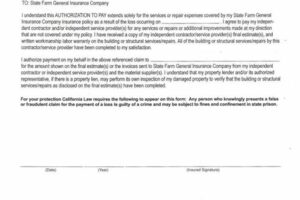Table of Contents
Learn how to preserve farmland in NY State by insuring it stays in farming through conservation easements and other agricultural land protection strategies.
If you’re a farmer in New York State, you know how critical it is to keep your farmland in the farming industry. However, with the increasing pressure of urbanization and development, it can be challenging to ensure that your land remains dedicated to agriculture. But don’t worry, there are several steps you can take to protect your farm from being converted to non-agricultural use. First and foremost, consider enrolling in an agricultural district program, which provides legal protection to farmland. Additionally, you can explore conservation easements, which allow you to maintain ownership of the land while limiting its development rights. Finally, it’s crucial to have a succession plan in place to ensure that your farm continues to operate for generations to come. By taking these proactive steps, you can help secure the future of agriculture in New York State.
Farmland is an essential resource for any state, and New York State is no exception. The state has a rich agricultural history that dates back centuries, and the farmland here provides food for millions of people across the country. However, with urbanization and industrialization on the rise, there is a constant threat to farmland, which can be lost forever. This article aims to provide some tips on how to insure farmland stays in farming in New York State.
1. Understand the Importance of Farmland Preservation
Before delving deeper into the ways to preserve farmland, it’s essential to understand why it’s important. Farmland preservation is necessary for two primary reasons. Firstly, it ensures that agricultural activities continue, which means that fresh produce is available to consumers. Secondly, farmland preservation helps to maintain the rural character of an area, which is crucial for the environment and the overall quality of life of the people living there.
2. Know Your Options
There are several options available to preserve farmland. One of the most common ways is through conservation easements. A conservation easement is a voluntary agreement between a landowner and a land trust or government agency that limits the land’s use to agriculture or other conservation purposes. Another way is through agricultural districts, which are created by local governments to protect farmland from non-farm development. Additionally, landowners can also sell their development rights to the government, which means that they receive monetary compensation for not developing their land.
3. Partner with a Land Trust
A land trust is a nonprofit organization that works to conserve land by acquiring and managing it. Land trusts partner with landowners to protect their land from development and ensure that it remains in agriculture. By working with a land trust, landowners can benefit from tax incentives, grants, and other resources that can help them preserve their farmland.
4. Utilize Government Programs
The government has several programs that aim to preserve farmland. For instance, the Agricultural Conservation Easement Program (ACEP) provides financial assistance to landowners who want to protect their land with conservation easements. Additionally, the Farmland Protection Implementation Grant Program (FPIG) offers grants to local governments and nonprofit organizations to purchase development rights on farmland.
5. Use Agricultural Assessments
Agricultural assessments are a tool used to reduce property taxes on farmland. Landowners who agree to keep their land in agriculture or other conservation purposes can benefit from reduced property taxes. Agricultural assessments provide an incentive for landowners to keep their land in agriculture and make it more affordable to do so.
6. Educate Yourself
Education is key to understanding farmland preservation. Landowners should educate themselves about the options available to them and the benefits of preserving their land. Additionally, they should familiarize themselves with local and state laws and regulations regarding farmland preservation.
7. Work with Local Governments
Local governments play a critical role in farmland preservation. They can create agricultural districts, implement zoning ordinances that protect farmland, and provide financial assistance to landowners. Landowners should work with local governments to ensure that they are aware of the resources available to them and to advocate for policies that support farmland preservation.
8. Encourage Community Support
Community support is crucial for farmland preservation. Landowners should engage with their communities and educate them about the importance of preserving farmland. Additionally, they should encourage their communities to support local farmers and purchase locally grown produce. By building community support, landowners can create a network of people who value farmland and are willing to take action to preserve it.
9. Plan for the Future
Preserving farmland is a long-term commitment, and it is essential to plan for the future. Landowners should develop a plan for their farmland that outlines their goals and objectives for preserving it. Additionally, they should consider succession planning to ensure that their farmland remains in agriculture for future generations.
10. Take Action
Ultimately, the most important thing that landowners can do to preserve their farmland is to take action. Whether it’s partnering with a land trust, utilizing government programs, or educating their communities, every action that landowners take can make a difference in preserving farmland for future generations.
In conclusion, farmland preservation is essential for New York State’s agricultural industry and the overall quality of life of its residents. By understanding the importance of farmland preservation, knowing the options available, partnering with land trusts and local governments, educating themselves and their communities, planning for the future, and taking action, landowners can ensure that their farmland stays in farming for generations to come.
Assessing the current state of farmland is the first step towards insuring it stays in farming in the state of New York. Evaluating soil quality, crop yield potential, and legal restrictions are all important considerations. Collaborating with local agricultural organizations, such as the New York Farm Bureau, can provide valuable support and insights. Exploring conservation easements, leasing the land, and establishing agricultural districts are all effective ways to ensure farmland remains in use for farming purposes. Forming a farm or conservation trust and selling development rights are also viable options. Promoting education and awareness about the importance of farmland use, engaging with the local community, and leading by example are all powerful ways to inspire others to take action in preserving farmland for future generations. By taking proactive steps, we can create a culture that values and supports the preservation of farmland in New York State.
Once upon a time, in the great state of New York, there was a concern about the future of farmland. Many farmers were struggling to keep up with the increasing costs of running a farm, and as a result, some were being forced to sell their land to developers. This was a problem not only for the farmers but for the state as a whole. The loss of farmland meant a loss of agricultural production and a decrease in the state’s ability to feed its population.
But there was hope. There were ways to insure farmland stays in farming in NY State:
Create Agricultural Districts: One way to protect farmland is to create agricultural districts. These districts are designed to promote the continued use of farmland for agricultural purposes. They provide tax incentives and other benefits to farmers who agree to keep their land in agricultural production. By creating these districts, the state can help ensure that farmland stays in farming for years to come.
Conservation Easements: Another way to protect farmland is through conservation easements. These agreements allow farmers to sell development rights to their land while retaining ownership and the right to farm. In exchange for selling development rights, the farmer receives compensation. This ensures that the land remains in agricultural production while providing the farmer with financial support.
Farmland Protection Grants: The state can also offer farmland protection grants to farmers who agree to keep their land in agricultural production. These grants provide financial assistance to farmers who would otherwise struggle to keep their land in farming. By offering these grants, the state can help ensure that farmland stays in farming and that farmers can continue to produce food for the state’s population.
Buy-Development Rights Programs: Finally, the state can also create buy-development rights programs. These programs allow developers to purchase the development rights to farmland, which prevents the land from being developed while providing the farmer with financial compensation. This is a win-win situation as it protects farmland while providing the farmer with financial support.
By using these methods, the state of New York can help ensure that farmland stays in farming for years to come. It’s important to protect our agricultural heritage and to support our farmers. By doing so, we can ensure that our state continues to produce food for generations to come.
Thank you for taking the time to read about how to insure farmland stays in farming in NY State. We hope that this article has provided you with valuable insights into the importance of preserving farmland and the different ways to achieve this goal.
As we discussed earlier, farmland preservation not only benefits farmers but also helps to enhance the local economy, protect the environment, and promote sustainable agriculture. By keeping farmland in farming, we can ensure that future generations will have access to fresh, healthy, locally grown food and a thriving agricultural sector.
There are several options available to farmers and landowners who are interested in preserving their farmland, including conservation easements, agricultural districts, and transfer of development rights. Each of these approaches has its own unique benefits and challenges, and it’s important to consult with experts and professionals to determine which option is right for your specific situation.
In conclusion, we encourage you to take action to preserve farmland in NY State by exploring the different preservation options available and supporting local initiatives that promote sustainable agriculture. Together, we can ensure that farmland stays in farming and that our communities continue to thrive for generations to come.
.
When it comes to insuring farmland stays in farming in New York State, many people have questions. Here are some of the most common ones:
1. How can I ensure my farm stays in agriculture?
The best way to ensure your farmland stays in farming is to place a conservation easement on the property. This legally binding agreement limits the future development of the land to agricultural purposes only. It can be a great way to protect your farm from being sold for non-agricultural purposes and keep it in the family for generations to come.
2. Is there any financial assistance available?
Yes, there are several programs available that can help farmers with the cost of placing a conservation easement on their land. The Agricultural Conservation Easement Program (ACEP) and the NYS Department of Agriculture and Markets’ Farmland Protection Implementation Grant Program are just two examples of programs that can provide financial assistance to farmers who want to preserve their farmland.
3. Can I still make changes to the property if I have a conservation easement?
Yes, you can still make changes to the property as long as they don’t violate the terms of the conservation easement. For example, you can build additional barns or install new fencing, but you cannot subdivide the land or build non-agricultural structures on it.
4. What happens if I sell the property?
If you sell the property, the conservation easement stays with the land and the new owner must comply with its terms. This means that the land must continue to be used for agricultural purposes only. If the new owner violates the terms of the easement, they can be sued by the state or the organization that holds the easement.
5. How do I get started?
If you’re interested in placing a conservation easement on your farmland, the first step is to contact a land trust or other organization that holds easements. They can help you determine if your property is eligible and guide you through the process of applying for financial assistance and creating the easement agreement.
By taking steps to preserve your farmland, you can help ensure that agriculture remains a vital part of New York State’s economy and heritage for years to come.






